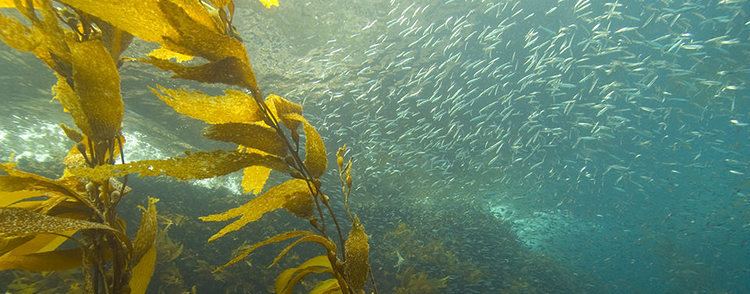 | ||
Similar | ||
Foraging seaweed harvesting a french coastal superfood
Seaweed refers to several species of macroscopic, multicellular, marine algae.
Contents
- Foraging seaweed harvesting a french coastal superfood
- Harvesting edible seaweed and introducing the kelly kettle and extreme greens seaweed book
- Taxonomy
- Structure
- Ecology
- Uses
- Food
- Herbalism
- Filtration
- Other uses
- Health risks
- Genera
- References
The term includes some types of red, brown, and green algae. Seaweed can also be classified by use (as food, medicine, fertilizer, filtration, industrial, etc.).
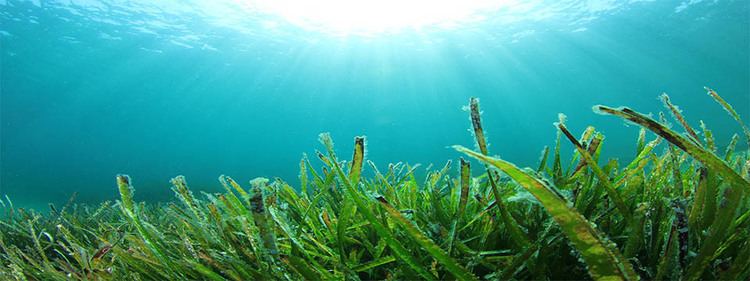
Harvesting edible seaweed and introducing the kelly kettle and extreme greens seaweed book
Taxonomy
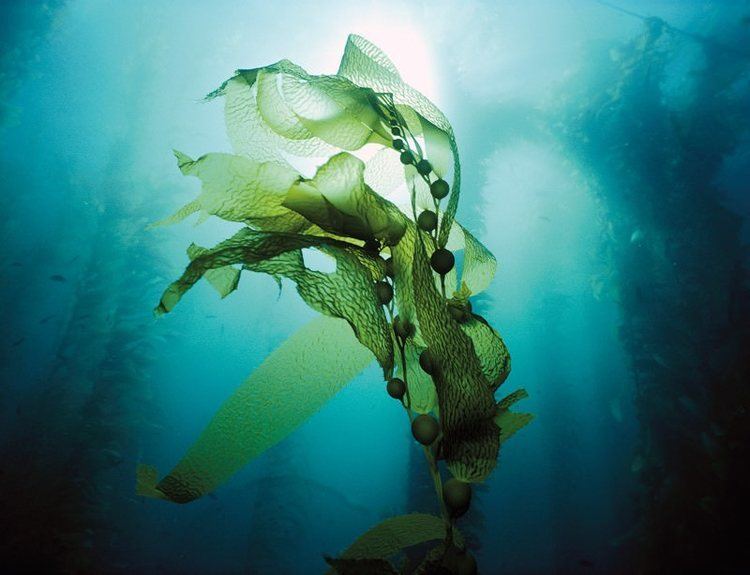
"Seaweed" is a colloquial term and lacks a formal definition. A seaweed may belong to one of several groups of multicellular algae: the red algae, green algae, and brown algae. As these three groups do not have a common multicellular ancestor, the seaweed are in a polyphyletic group. In addition, some tuft-forming bluegreen algae (Cyanobacteria) are sometimes considered to be seaweed.
Structure
Seaweed's appearance somewhat resembles non-arboreal terrestrial plants.
The stipe and blade are collectively known as the frond.
Ecology
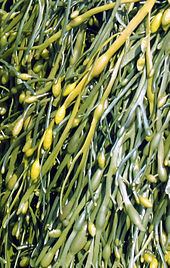
Two specific environmental requirements dominate seaweed ecology. These are the presence of seawater (or at least brackish water) and the presence of light sufficient to drive photosynthesis. Another common requirement is a firm attachment point, although some genera such as Sargassum and Gracilaria have species that float freely. As a result, seaweed most commonly inhabit the part of a sea that is close to the shore (the littoral zone) and within that zone more frequently on rocky shores than on sand or shingle. Seaweed occupy a wide range of ecological niches. The highest elevation is only wetted by the tops of sea spray, the lowest is several meters deep. In some areas, littoral seaweed can extend several miles out to sea. The limiting factor in such cases is sunlight availability. The deepest living seaweed are some species of red algae.
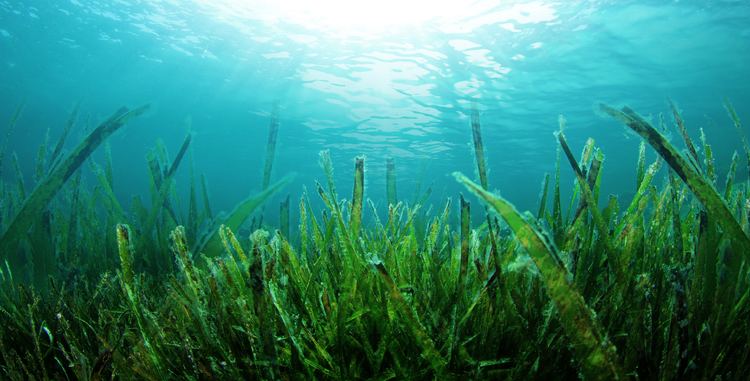
Others have adapted to live in tidal rock pools. In this habitat seaweed must withstand rapidly changing temperature and salinity and even occasional drying.
Uses
Seaweed has a variety of purposes, for which it is farmed or foraged from the wild.
At the beginning of 2011, Indonesia produced 3 million tonnes of seaweed and surpassed the Philippines as the world's largest seaweed producer. By 2011, the production was estimated to have reached 10 million tonnes.
Food
Seaweed is consumed by coastal people, particularly in East Asia, e.g. Japan, China, Korea, Taiwan, and Southeast Asia, e.g. Brunei, Singapore, Thailand, Burma, Cambodia, Vietnam, Indonesia, Philippines, and Malaysia, and also in South Africa, Belize, Peru, Chile, the Canadian Maritimes, Scandinavia, South West England, Ireland, Wales, California, and Scotland.
In Asia, Gim (Korean food) (김, Korea), nori (海苔, Japan), zicai (紫菜, China) are sheets of dried Porphyra used in soups, sushi wrap or onigiri (rice balls). Chondrus crispus (commonly known as 'Irish moss' or carrageenan moss) is another red alga used in producing food additives, along with Kappaphycus and gigartinoid seaweed. Porphyra is a red alga used in Wales to make laver. Laverbread, made from oats and the laver, is a popular dish there. In northern Belize, edible seaweed are mixed with milk, nutmeg, cinnamon, and vanilla to make a common beverage affectionately called "dulce" (or "sweet").
Seaweed are also harvested or cultivated for the extraction of alginate, agar and carrageenan, gelatinous substances collectively known as hydrocolloids or phycocolloids. Hydrocolloids have attained commercial significance as food additives. The food industry exploits their gelling, water-retention, emulsifying and other physical properties. Agar is used in foods such as confectionery, meat and poultry products, desserts and beverages and moulded foods. Carrageenan is used in salad dressings and sauces, dietetic foods, and as a preservative in meat and fish products, dairy items and baked goods.
Herbalism
Alginates are commonly used in wound dressings, and production of dental moulds. In microbiology research, agar — a plant-based goo similar to gelatin and made from seaweed — is extensively used as culture medium. Carrageenans, alginates and agaroses (the latter are prepared from agar by purification), with other lesser-known macroalgal polysaccharides, have several important biological activities or applications in biomedicine.
Seaweed extract is used in some diet pills. Other seaweed pills exploit the same effect as gastric banding, expanding in the stomach to make the body feel more full.
Filtration
The strong photosynthesis of algae creates a large affinity for nutrients; this allows the seaweed to be used purposely to remove undesired nutrients from water. Nutrients such as ammonia, ammonium nitrate, nitrite, phosphate, iron, copper, as well as CO2 are rapidly consumed by growing seaweed. Reefs and lakes are naturally filtered this way (the seaweed being consumed by fish and invertebrates), and this filtering process is duplicated in man-made seaweed filters such as algae scrubbers.
Seaweed (macroalgae), as opposed to phytoplankton (microalgae), is used almost universally for filtration purposes because of the need to be able to easily remove (harvest) the algae from the water, which then removes the nutrients. Microalgae require more processing to separate it from the water than macroalgae does; macroalgae is simply pulled out.
When used for filtration, saltwater algae commonly grows species of Cladophora, Ulva, and Chaetomorpha. Freshwater filtration applications are useful, too, and will commonly grow species such as Spirogyra.
Other uses
Other seaweed may be used as fertilizer, compost for landscaping, or a means of combating beach erosion through burial in beach dunes. Seaweed is under consideration as a potential source of bioethanol.
Seaweed is an ingredient in toothpaste, cosmetics and paints. Alginates enjoy many of the same uses as carrageenan and are used in industrial products such as paper coatings, adhesives, dyes, gels, explosives and in processes such as paper sizing, textile printing, hydro-mulching and drilling. Research suggests that the Australian seaweed Delisea pulchra may interfere with bacterial colonization. Sulfated saccharides from both red and green algae have been known to inhibit some DNA and RNA enveloped viruses.
Seaweed collecting is the process of collecting, drying and pressing seaweed. It was a popular pastime in the Victorian era and remains a hobby today.
Seaweed is sometimes used to build roofs on houses on Læsø [1]
Health risks
Rotting seaweed is a potent source of hydrogen sulfide, a highly toxic gas, and has been implicated in some incidents of apparent hydrogen-sulphide poisoning. It can cause vomiting and diarrhea.
Genera
The following table lists a very few example genera of seaweed.
